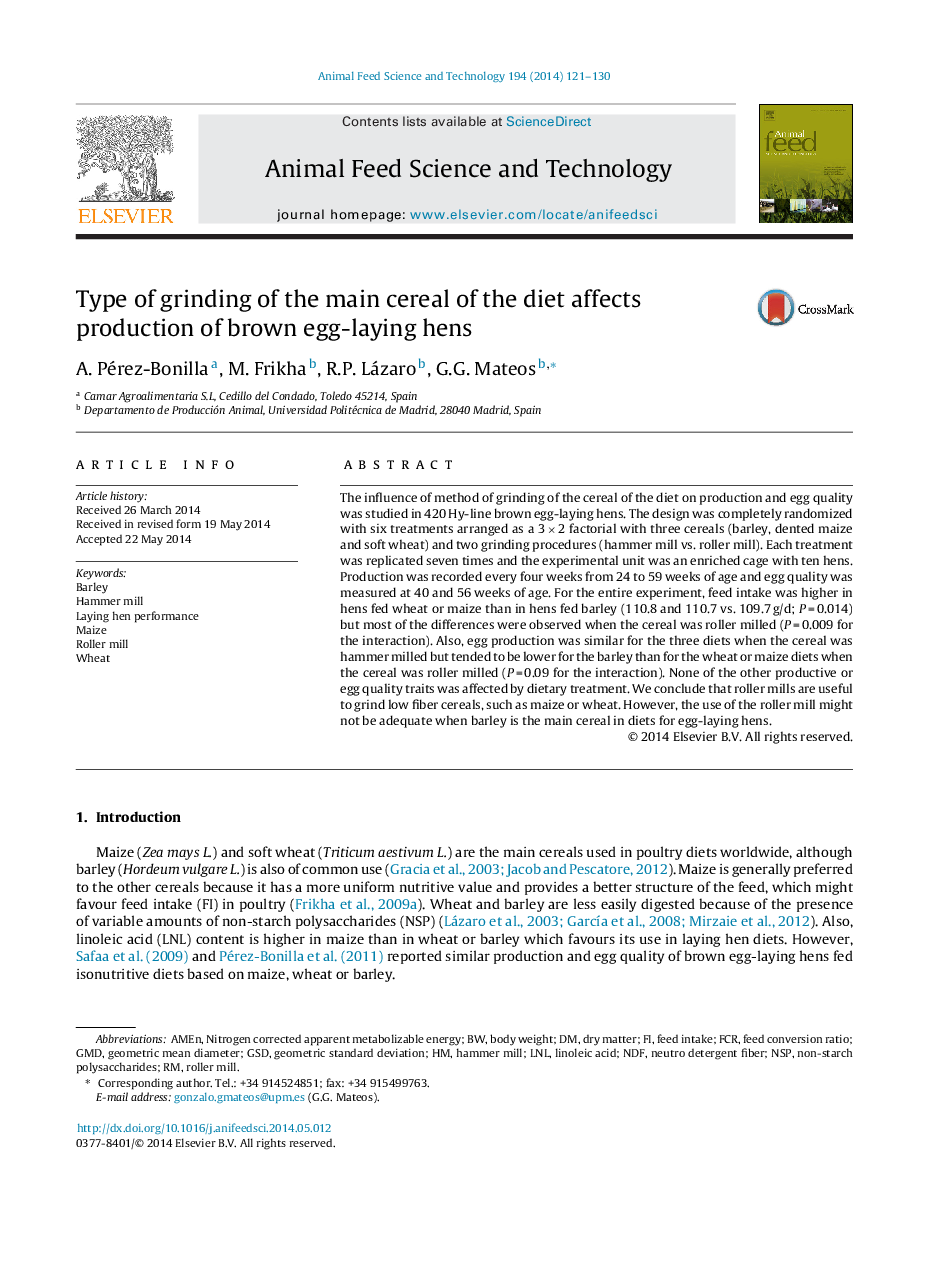| Article ID | Journal | Published Year | Pages | File Type |
|---|---|---|---|---|
| 2419573 | Animal Feed Science and Technology | 2014 | 10 Pages |
•We compared cereals rolled or hammer milled in laying hens.•Hens performed similar when the cereals (wheat, maize and barley) were hammer milled.•Rolled milled barley reduced feed intake and tended to reduce egg production.•Rollers can be used to grind low cereal diets for laying hens but not for barley.
The influence of method of grinding of the cereal of the diet on production and egg quality was studied in 420 Hy-line brown egg-laying hens. The design was completely randomized with six treatments arranged as a 3 × 2 factorial with three cereals (barley, dented maize and soft wheat) and two grinding procedures (hammer mill vs. roller mill). Each treatment was replicated seven times and the experimental unit was an enriched cage with ten hens. Production was recorded every four weeks from 24 to 59 weeks of age and egg quality was measured at 40 and 56 weeks of age. For the entire experiment, feed intake was higher in hens fed wheat or maize than in hens fed barley (110.8 and 110.7 vs. 109.7 g/d; P = 0.014) but most of the differences were observed when the cereal was roller milled (P = 0.009 for the interaction). Also, egg production was similar for the three diets when the cereal was hammer milled but tended to be lower for the barley than for the wheat or maize diets when the cereal was roller milled (P = 0.09 for the interaction). None of the other productive or egg quality traits was affected by dietary treatment. We conclude that roller mills are useful to grind low fiber cereals, such as maize or wheat. However, the use of the roller mill might not be adequate when barley is the main cereal in diets for egg-laying hens.
